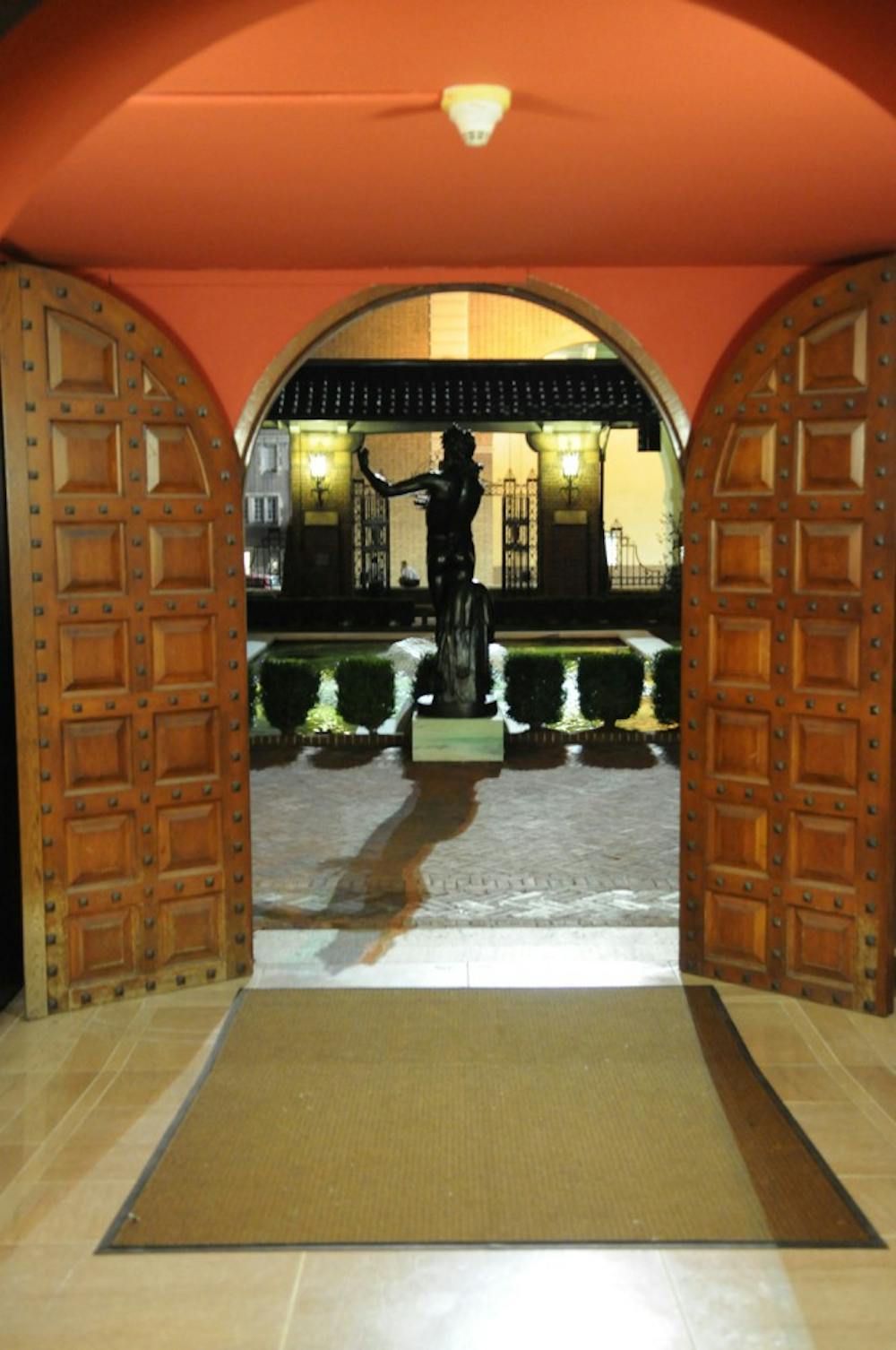
With the unveiling of an array of programming this year, the University Museum of Archaeology and Anthropology is working overtime to attract more Penn and Philadelphia community members.
Launching initiatives such as evening programming, extended hours and an upscale cafe, the Penn Museum is aiming to become “more accessible to students and the public,” according to Maggie Leone, a College sophomore who worked there this summer.
This emphasis on community outreach is ostensibly a departure from the Penn Museum’s traditional reputation.
Naomi Miller, a research project manager at the Penn Museum, acknowledged that “in the past, public programming was not as emphasized as it is now. The current director is really pushing the outreach and educational component.”
According to Miller, this changing mission may appear to affect the Penn Museum’s research reputation. “If you’re expanding outreach, you could maintain research and collections, but obviously it looks like research is less important. Relatively speaking, it is less important,” she said. As a researcher, she added, “you have to just kind of roll with the punches.”
Alan Wallach, a professor of art and art history who specializes in the history of American art institutions at the College of William & Mary, acknowledged in an e-mail that such programming changes “diminish a museum’s scholarly reputation only if they are bought at the expense of its scholarly programs.”
Penn Museum Director Richard Hodges insisted that the Penn Museum can walk the line between scholarship and community engagement. “We’re not intending to dumb down,” he said. “We’re intending to find the right levels of exhibits” that appeal to community members.
In fact, viewing the Penn Museum’s development in the most “mercenary” way, Hodges added, popular programming and services can lead to more advanced research and an overall higher level of scholarship within the institution. Despite the University’s support, “we’re so under-resourced,” Hodges said. If the Museum acquires new members through expanded programming, he added, “there’s a good chance a proportion of those [members] will help us reach other forms of support we can’t even begin to imagine.”
Samantha Cox, a 2010 College graduate who is finishing her master’s degree in physical anthropology in Penn’s accelerated program, began volunteering at the Penn Museum in high school. Now, Cox said, the Museum’s expanded programs are “starting to pay off,” as she has noticed the institution’s visitorship increasing.
The Challenge of Student Involvement
Some students remain uncertain, however, whether these changes will actually catalyze community engagement with the museum.
Paul Mitchell — a College sophomore who submatriculated into Penn’s physical anthropology program — said those who know about the Penn Museum’s programs are “like an exclusive club ... the biggest issue the museum will have will be getting people to come in the first place.”
Nonetheless, as Hodges and the Penn Museum administration hoped, the museum’s finances are “gently inching up,” Hodges said.
At the end of fiscal year 2010, the Museum’s total revenue was $17,904,000. In fiscal year 2009, it brought in $16,733,000. Fiscal years at Penn begin every July 1.
In FY 2010, sales composed 9.9 percent of the Penn Museum’s total revenue, while the previous year they composed 9.7 percent, reflecting increased catering, gift shop, event and program sales.
Moreover, according to Hodges, donations to the Penn Museum have risen “sharply” due to new initiatives. Whereas the FY 2009 gifts made up 16.6 percent of the museum’s budget, the FY 2010 gifts made up 21.2 percent.
An Evolving Institution
Though changes to the Penn Museum have been at the forefront of students’ and staff members’ minds lately, this is not the first time the institution has shifted its focus.
The goals of the Penn Museum have fluctuated subtly since its inception in 1887. From the time it was founded into the early 20th century, the institution strove to be “an encyclopedic museum” for the Philadelphia Main Line, Hodges explained. “Visitors came into rooms and everything on display was crammed in,” he said.
During the Great Depression, the Penn Museum laid off many staff members and failed to develop its collections as its finances struggled, Hodges explained.
Yet the institution rebounded in the post-war era, gaining a global reputation for its archaeological excavations while forgoing its efforts to maintain the actual museum. In this way, “it was not really a public museum” until the Museum Board of Overseers began seeking more public interest when the Museum got a new director in 1976, Hodges explained.
The Museum undertook a $30-million renovation project in 2002 aimed partly at garnering that public interest. According to an article published in The Daily Pennsylvanian that year, Penn Museum spokeswoman Pam Kosty said with the development “hopefully students will finally understand the huge resource they have at their fingertips.”
Though after eight years the Penn Museum has yet to reach the level of community involvement it has been striving for, the museum continues to pursue its goals. “We can have all this great stuff,” Cox concluded, “but if nobody sees it, what use is it?”
The Daily Pennsylvanian is an independent, student-run newspaper. Please consider making a donation to support the coverage that shapes the University. Your generosity ensures a future of strong journalism at Penn.
DonatePlease note All comments are eligible for publication in The Daily Pennsylvanian.





